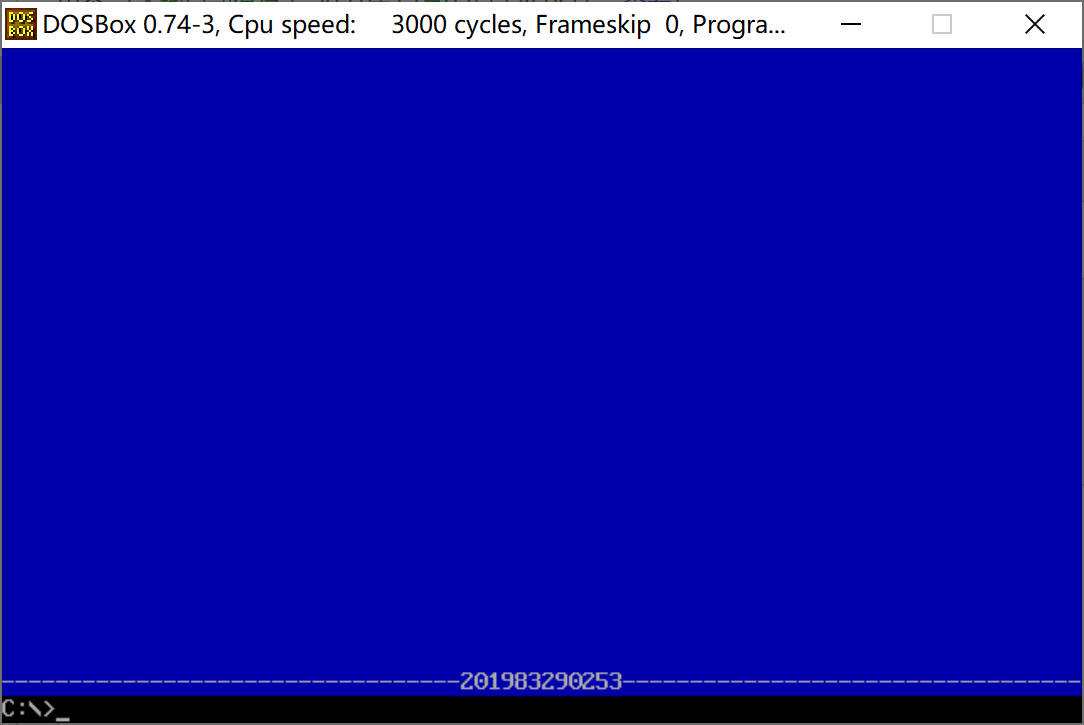Experiment 3 Transfer Instruction Jump Principle and Simple Application Programming
1. Experimental Purpose
-
Understanding and mastering the jump principle of transfer instructions
-
Learn how to implement subroutines using call and ret instructions, understand and understand how their parameters are passed
-
Understanding and mastering 80 × 25 Color Character Mode Display Principle
-
Complete simple application programming by synthesizing addressing methods and assembly instructions
2. Preparing for Experiment
Review textbook chapters 9-10:
-
Jump principle of transfer instructions
-
Usage of assembly instructions jmp, loop, jcxz, call, ret, retf
3. Experimental Contents
1. Experimental Task 1
Using any text editor, enter the 8086 assembler source task1.asm.
1 assume cs:code, ds:data 2 3 data segment 4 x db 1, 9, 3 5 len1 equ $ - x 6 7 y dw 1, 9, 3 8 len2 equ $ - y 9 data ends 10 11 code segment 12 start: 13 mov ax, data 14 mov ds, ax 15 16 mov si, offset x 17 mov cx, len1 18 mov ah, 2 19 s1:mov dl, [si] 20 or dl, 30h 21 int 21h 22 23 mov dl, ' ' 24 int 21h 25 26 inc si 27 loop s1 28 29 mov ah, 2 30 mov dl, 0ah 31 int 21h 32 33 mov si, offset y 34 mov cx, len2/2 35 mov ah, 2 36 s2:mov dx, [si] 37 or dl, 30h 38 int 21h 39 40 mov dl, ' ' 41 int 21h 42 43 add si, 2 44 loop s2 45 46 mov ah, 4ch 47 int 21h 48 code ends 49 end start
Test Run:
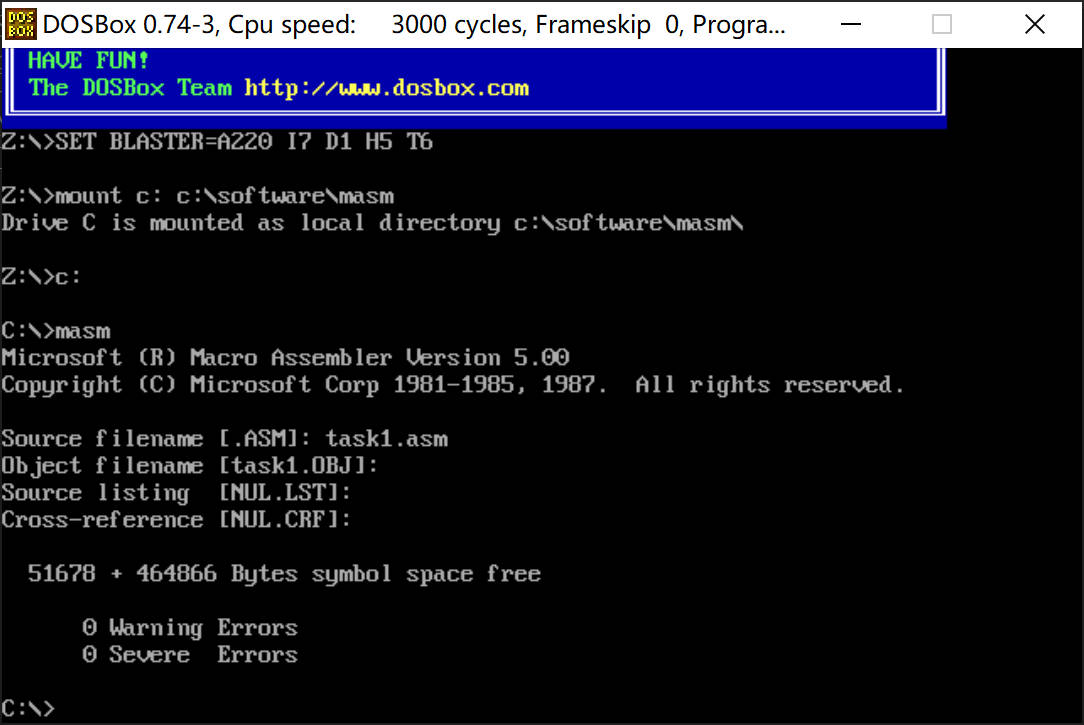
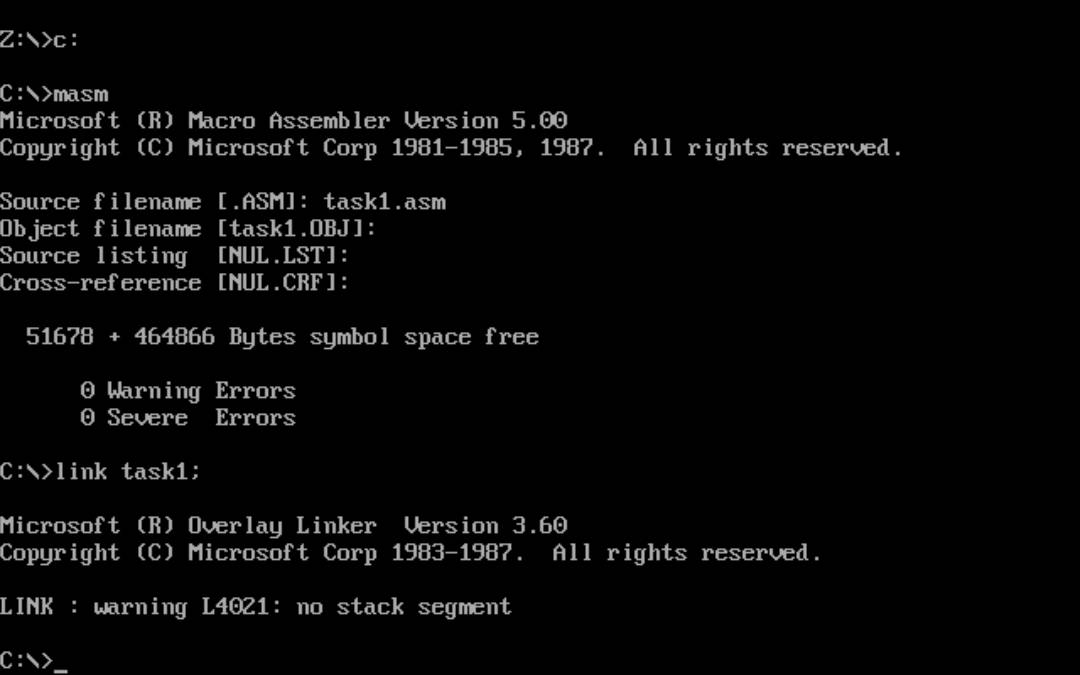
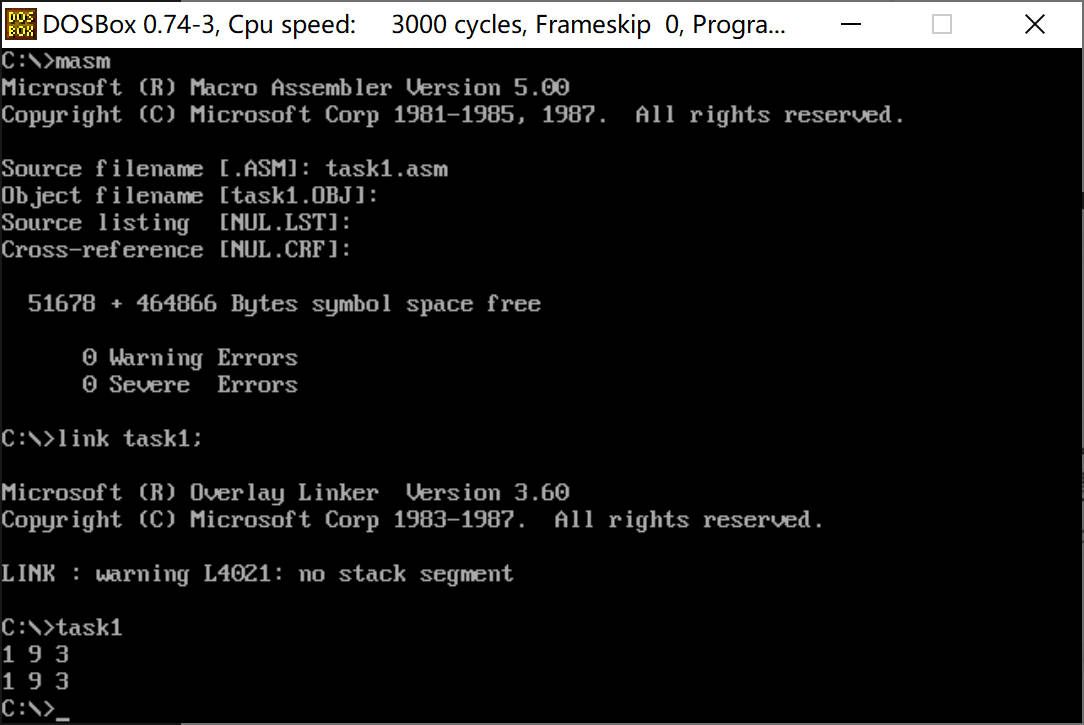
Display results output 2 lines "19 3"
debug view:
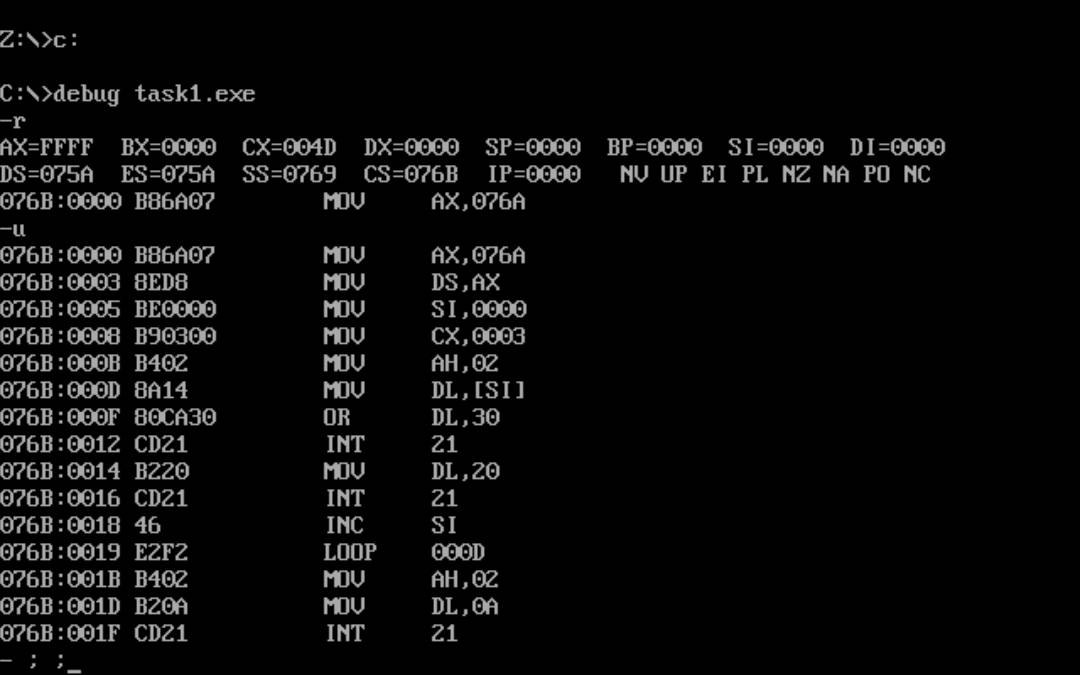
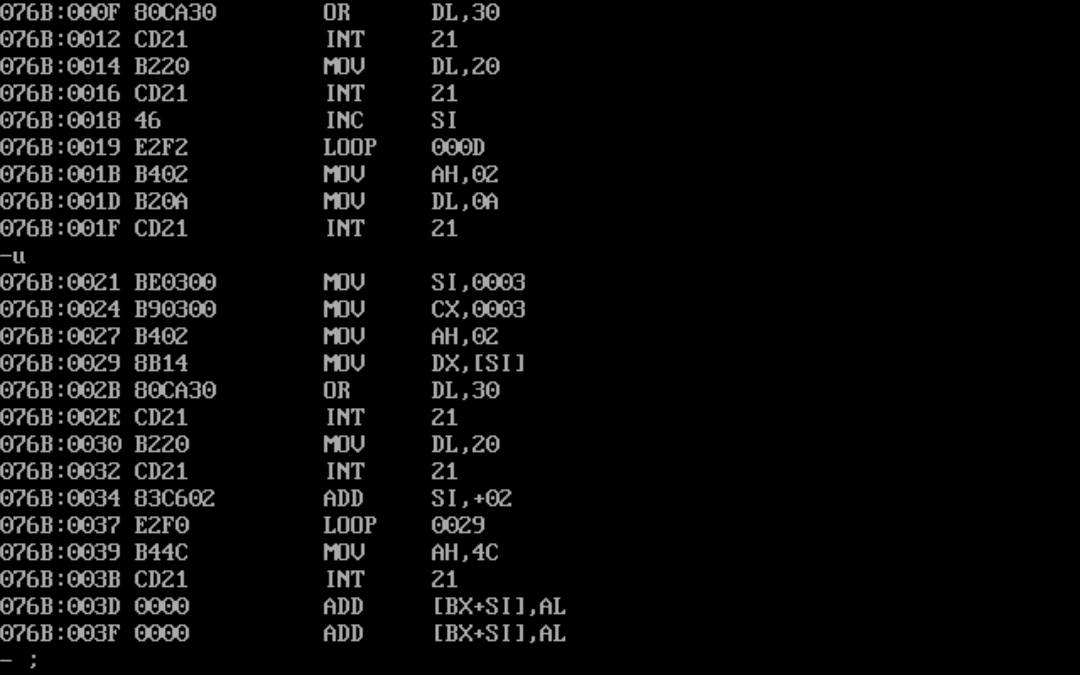
Question answering
(1) line27, assembly instructions loop s1 When jumping, it jumps according to the amount of displacement. Through debug disassembly, look at its machine code, analyze its jump displacement from the CPU's point of view, F2 is complement 11110010, the original code 10001110, in decimal value (-14), the estimated starting address is 27 + (-14) = 13 -> 000D (hexadecimal)
(2) line44, assembly instructions loop s2 When jumping, it jumps according to the amount of displacement. Through debug disassembly, look at its machine code, from the perspective of CPU, analyze its jump displacement, F0 is complement 11110000, original code 10010000, in decimal value (16), the estimated starting address is 57 - 16 = 41 -> 29 (hexadecimal)
2. Experimental Task 2
Using any text editor, enter the 8086 assembler source task2.asm.
1 assume cs:code, ds:data 2 3 data segment 4 dw 200h, 0h, 230h, 0h 5 data ends 6 7 stack segment 8 db 16 dup(0) 9 stack ends 10 11 code segment 12 start: 13 mov ax, data 14 mov ds, ax 15 16 mov word ptr ds:[0], offset s1 17 mov word ptr ds:[2], offset s2 18 mov ds:[4], cs 19 20 mov ax, stack 21 mov ss, ax 22 mov sp, 16 23 24 call word ptr ds:[0] 25 s1: pop ax 26 27 call dword ptr ds:[2] 28 s2: pop bx 29 pop cx 30 31 mov ah, 4ch 32 int 21h 33 code ends 34 end start
(1) According to the jump principle of call instruction, theoretical analysis is made first. Before program execution reaches line31, register (ax) = IP; register (bx) = IP; register (cx) = CS.
(2) Assemble and link the source program to get the executable program task2.exe. Use debug debugging to observe and verify the debugging results: the intra-segment offset address part of the address where the s1 code segment is stored in ax - 0021, the intra-segment offset address part of the address where the s2 code segment is stored in bx - 0026, and the intra-segment address part of the address where the s2 code segment is stored in cx - 076C.
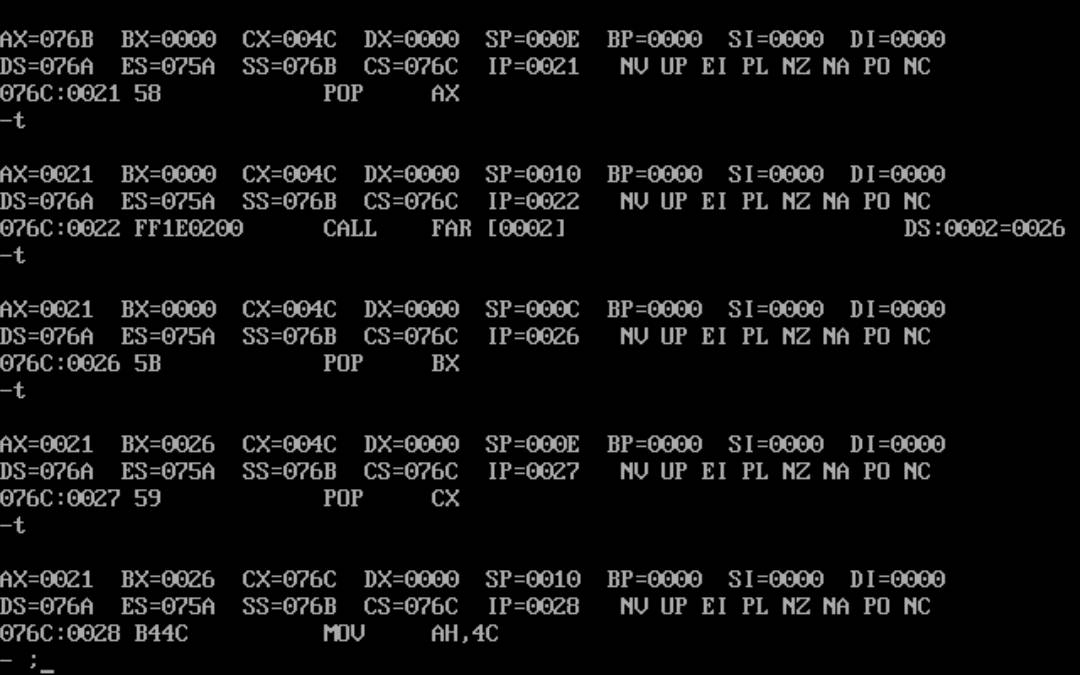
3. Experimental Task 3
Write the 8086 assembly source program task3.asm to output this continuous set of data in decimal form on the screen, with a space interval between the data and the data. Requirements: Write two subprograms, printNumber and printSpace, to output two digits and spaces, respectively.
In the main code, a combination of addressing methods and loops is applied, calling printNumber and printSpace to achieve the title requirements. Known logical segments are defined as follows:
1 data segment 2 x db 99, 72, 85, 63, 89, 97, 55 3 len equ $- x 4 data ends
Design code, ideas are commented in the code:
1 assume cs:code, ds:data 2 3 data segment 4 x db 99, 72, 85, 63, 89, 97, 55 5 len equ $- x 6 data ends 7 8 code segment 9 start: 10 mov ax, data 11 mov ds, ax 12 13 mov cx,len 14 mov si,0 15 s1: mov ah,0 16 mov al,[si] 17 mov bx,offset printnumber 18 call bx 19 mov bx,offset printSpace 20 call bx 21 inc si 22 loop s1 23 24 mov ah, 4ch 25 int 21h 26 27 printnumber: 28 mov bl,10 ;Calculate Bit Ten in Decimal 29 div bl 30 31 mov bx,ax 32 mov ah,2 33 34 mov dl,bl ;Print 10 digits 35 or dl,30h ;To ASCII value 36 int 21h 37 38 mov dl,bh ;Print digits 39 or dl,30h ;To ASCII value 40 int 21h 41 42 ret 43 printSpace: 44 mov ah,2 45 mov dl,' ' ;Move into Space Print Output 46 int 21h 47 ret 48 code ends 49 end start
Test result: correctly output the space interval number, nice
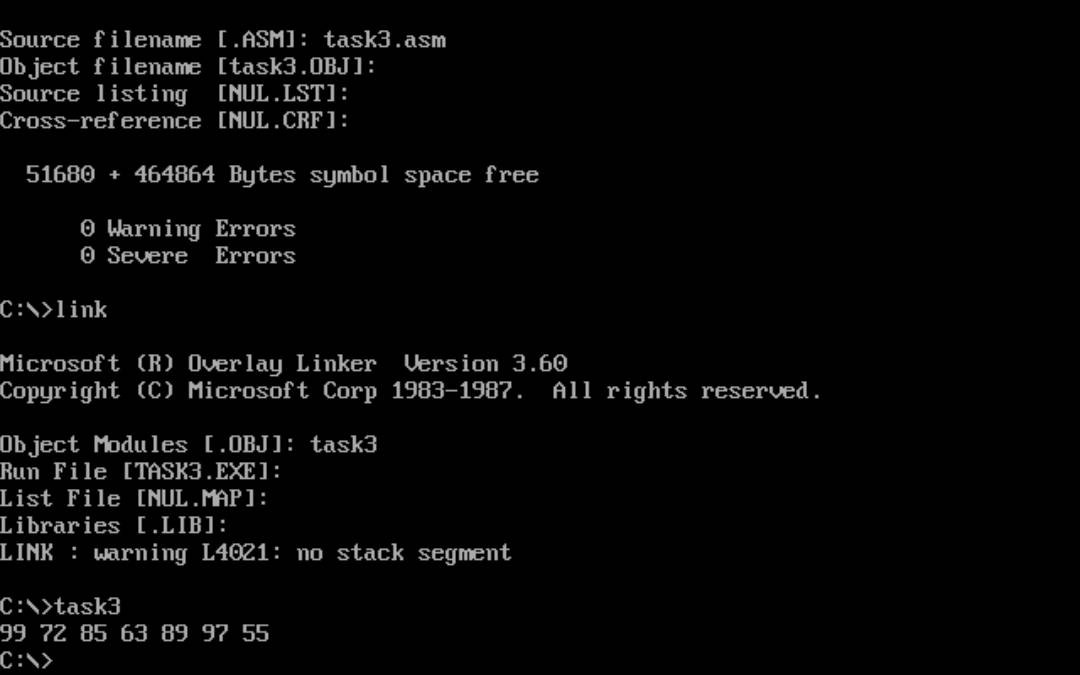
4. Experimental Task 4
Write 8086 assembly source program task4.asm, on the screen to specify the color, the specified line, on the screen output string.
Requires the writing of a subprogram, printStr, to achieve the following functions: to specify rows, to specify colors, to display strings on the screen; In the main code, printStr is called twice so that the string is displayed in green on black at the top of the screen and red on black at the bottom.
Known logical segments are defined as follows:
1 data segment 2 str db 'try' 3 len equ $ - str 4 data ends
Design code: Ideas are commented in the code:
1 assume cs:code, ds:data 2 3 data segment 4 str db 'try' 5 len equ $ - str 6 data ends 7 8 code segment 9 start: 10 mov ax, data 11 mov ds, ax 12 mov ax,0B800H ;Display Cache Address Start Location 13 mov es,ax 14 15 mov si,offset printTry ;First try 16 mov ah,00000010B ;Green on black is 00000010 B 17 mov bx,0 ;Position the first line 18 call si 19 20 mov si,offset printTry ;The second try 21 mov ah,00000100B ;Red on black is 00000100 B 22 mov bx,0F00H ;Position the last line 23 call si 24 25 mov ah, 4ch 26 int 21h 27 28 printTry: 29 mov cx,len 30 mov si,0 31 s1: mov al,[si] 32 mov es:[bx+si],ax 33 inc si 34 inc bx 35 loop s1 36 ret 37 38 code ends 39 end start
Test results:
Green on black is here:
↓

↑
Red on Black Here
5. Experimental Task 5
In 80x25 color character mode, the school number is displayed in the middle of the last line of the screen. The output window is required to have a blue bottom with the school number and polylines on both sides displayed in white foreground color.
Known logical segments are defined as follows:
1 data segment 2 stu_no db '201983290253' ;Own number 3 len = $ - stu_no 4 data ends
The design code is as follows:
1 assume cs:code, ds:data 2 3 data segment 4 stu_no db '201983290253' 5 len = $ - stu_no 6 data ends 7 8 code segment 9 start: 10 mov ax, data 11 mov ds, ax ; Data from ds Coming Middle 12 mov ax,0B800H ;Display Cache Address Start Location 13 mov es,ax ;Data to es In, es Register Points to Display Segment 14 15 mov cx,0780H ;Dye blue 16 mov ah,10H 17 mov al,' ' 18 mov bx,0 19 s1: mov es:[bx],ax 20 add bx,2 21 loop s1 22 23 mov cx,80;Print horizontal lines 24 mov ah,17H ;(00010111)White on Blue 25 mov al,'-' 26 s2: mov es:[bx],ax 27 add bx,2 28 loop s2 29 30 mov cx,len 31 mov bx,0F44H ;Centered Output Number 32 mov si,0 33 s3: mov al,[si] 34 mov es:[bx],ax 35 inc si 36 add bx,2 37 loop s3 38 39 mov ah, 4ch 40 int 21h 41 42 code ends 43 end start
Show number:
